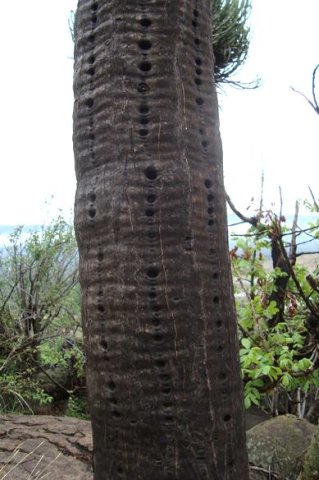Euphorbia sekukuniensis trunk

The trunk of an old Euphorbia sekukuniensis tree leaves clues about its earlier life. The spine shields along the young stem ridges are gone, but the vertical lines are visible on the now rounded surface where the ridges used to separate the flat surface bands. The fleshy green surfaces of youth are replaced by hard, fairly smooth, dark brown bark serving as the tree’s outer protective wall.
Where the lower side-branches of long ago once protruded are now only holes. Possibly not good in terms of stem protection but this does not seem to bother the old tree. Its vascular system probably bypasses these holes and no harm is done, while free shelter is offered to numerous insects and small others, forever seeking a hiding place from the ubiquitous hungry.
Transversal stem waviness is present in the bark, possibly representing a record of growth and rest seasons of long ago (Frandsen, 2017; Coates Palgrave, 2002).

